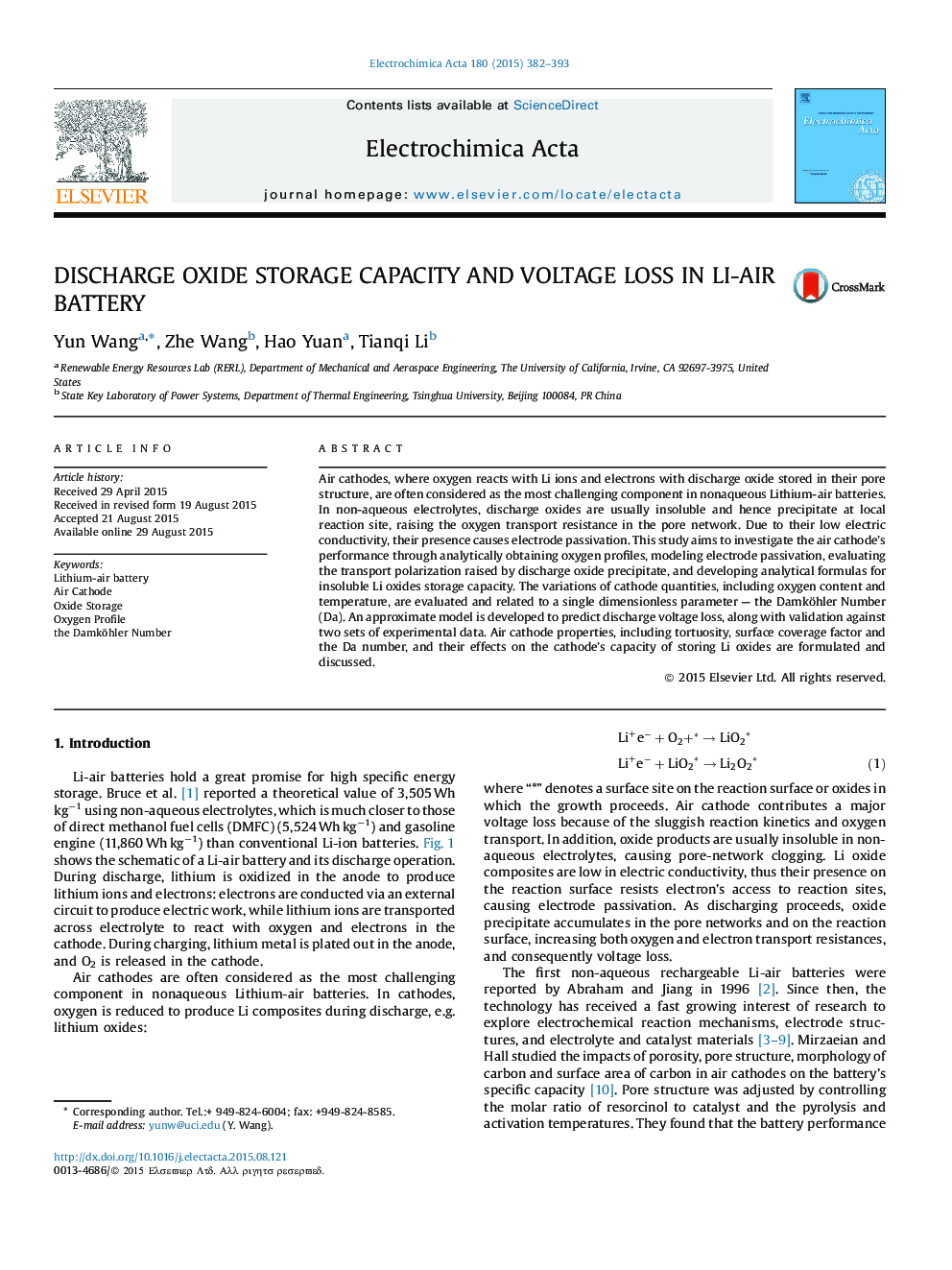| Article ID | Journal | Published Year | Pages | File Type |
|---|---|---|---|---|
| 6610325 | Electrochimica Acta | 2015 | 12 Pages |
Abstract
Air cathodes, where oxygen reacts with Li ions and electrons with discharge oxide stored in their pore structure, are often considered as the most challenging component in nonaqueous Lithium-air batteries. In non-aqueous electrolytes, discharge oxides are usually insoluble and hence precipitate at local reaction site, raising the oxygen transport resistance in the pore network. Due to their low electric conductivity, their presence causes electrode passivation. This study aims to investigate the air cathode's performance through analytically obtaining oxygen profiles, modeling electrode passivation, evaluating the transport polarization raised by discharge oxide precipitate, and developing analytical formulas for insoluble Li oxides storage capacity. The variations of cathode quantities, including oxygen content and temperature, are evaluated and related to a single dimensionless parameter - the Damköhler Number (Da). An approximate model is developed to predict discharge voltage loss, along with validation against two sets of experimental data. Air cathode properties, including tortuosity, surface coverage factor and the Da number, and their effects on the cathode's capacity of storing Li oxides are formulated and discussed.
Related Topics
Physical Sciences and Engineering
Chemical Engineering
Chemical Engineering (General)
Authors
Yun Wang, Zhe Wang, Hao Yuan, Tianqi Li,
